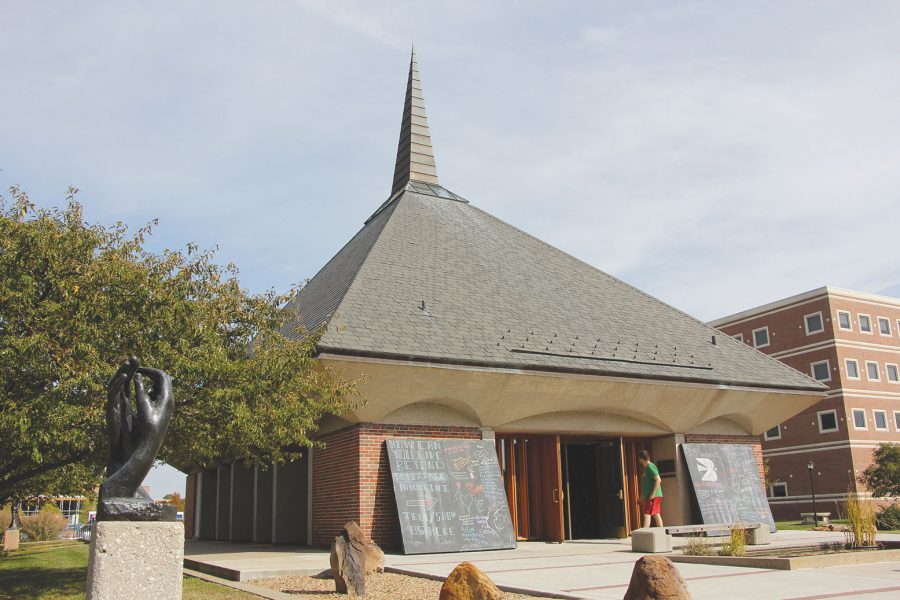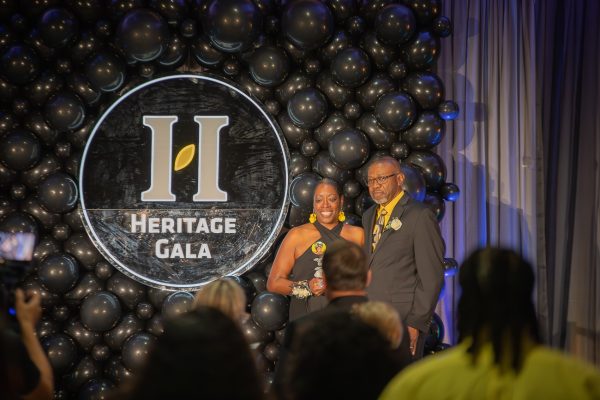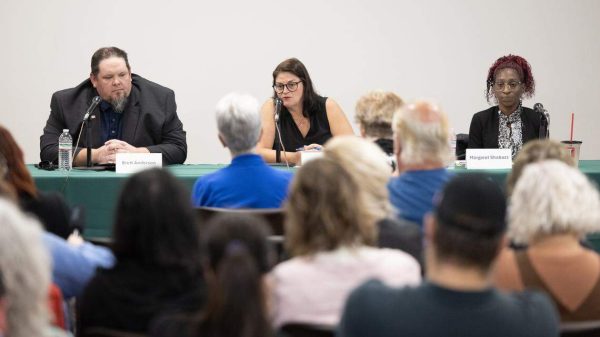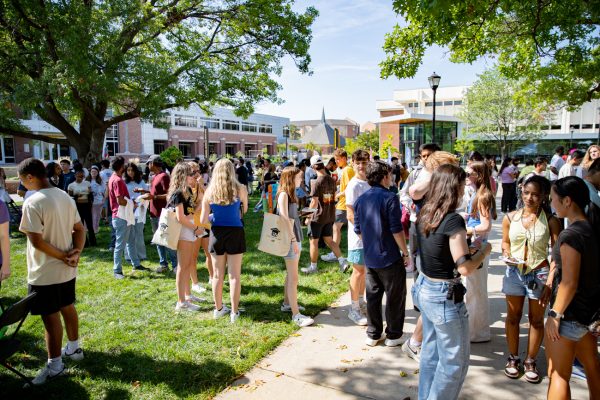No institutional response to chapel controversy means ‘perception becomes reality,’ university says
The Grace Memorial Chapel was used to host “Beyond Tolerance” on Thursday. The university hopes recent controversies surrounding the chapel will inspire more use of the space.
With the flood of derogatory and controversial comments proliferating social media in recent weeks regarding the Grace Memorial Chapel, university leaders discuss ways to respond.
During the height of the conversation, Wichita State’s Office of Strategic Communications worked to answer each comment individually to correct misinformation, said Tim Hart, web and new media content manager for Strategic Communications.
The office “catalogued” the concerns about the chapel and produced an online fact sheet in response to the common misconceptions.
This approach proved to be successful once people were working with the truth, said Joe Kleinsasser, a spokesman for the university.
“After the first wave [of responses], the media calls virtually dropped off the map,” he said. “They quickly lost interest or thought this story was pretty well over at that point.”
The media, along with the original commentators, quickly lost interest in the story after realizing what was going on with the chapel wasn’t a big deal, Kleinsasser said.
“We had people who were extremely angry at the beginning of the conversation, who by the end were thanking us for the information,” Hart said. “That happened on multiple occasions. Some even actually corrected their posts themselves. We thought it calmed things down immediately, and it was a non-issue for our social media channels within three days.”
Kleinsasser stressed the importance of responding in an “open, adaptable and accountable” manner in such situations.
“Every issue that rises to the point that it gets a lot of attention needs to be addressed in some way so that people can be working with facts,” said Lou Heldman, vice president of Strategic Communications. “This had reached a critical mass of public discussion, and if something reaches a critical mass of discussion and there is misinformation, then we want to correct that.”
With each post of misinformation serving as a potential source of even more information, the misconceptions grew, Hart said.
“Social media acts like a fun-house mirror, to an extent, so one post with misinformation then can be misconstrued by anyone who sees it, and now we have more versions of the misinformation, which then leads to a chain reaction of sorts,” he said. “It can get out of control.”
When approaching these comments on social media, Hart said he tried to respond to each post individually and with varying language.
“Two things make people angry on the web. One is getting no response … The second is responding with the same answer in the same way,” Hart said. “Because then, people believe that’s an institutional response. For some reason, even if it’s the truth, it gives them permission to discount it as some kind of trick or corporate strategy that somehow doesn’t hold the same weight even though it is in fact true.”
He said one challenge when faced with situations like this is to not take the comments personally or respond defensively.
“Anything that sounds defensive only heightens the anger,” he said. “It can be tough in the social media realm to not take things personally when you’re dealing with tons of traffic like this, but that’s always something we talk about regularly is, you know, they’re not talking to you they’re talking to an institution. You can’t take it personally. You just have to respond in a calm manner.”
Kleinsasser said responding openly, respectfully and in a timely manner was pivotal.
“If we hadn’t done anything, then perception becomes reality for people,” he said. “If you don’t respond, people are going to fill it in.”
Kleinsasser said what happened with the chapel exaggerated the evolution of media.
“It shows how things have changed over time,” he said. “This never would have happened nearly 30 years ago when I started here because there wasn’t social media like there is now. It’s a really an interesting phenomena to see how things have changed, and how people can share information, right or wrong, much faster. It’s a blessing and a curse, really.”
Like the evolution of social media, religious practices have evolved, as well. The chapel was renovated to better suit these changes, Heldman said.
“All religious practices evolve over a period of centuries,” he said. “We hope that Mrs. Grace would feel that her gift is being well used by continuing to serve the campus and evolving with the times.”
The chapel has gained visibility since the removal of pews, and the Strategic Communications office hopes people are more apt to use the space now.
“The chapel remains as it did before, true to its mission,” Hart said. “It’s always been an all-faiths space, and it remains so. The change is that it’s in a state now where it can better fulfill that mission.”








